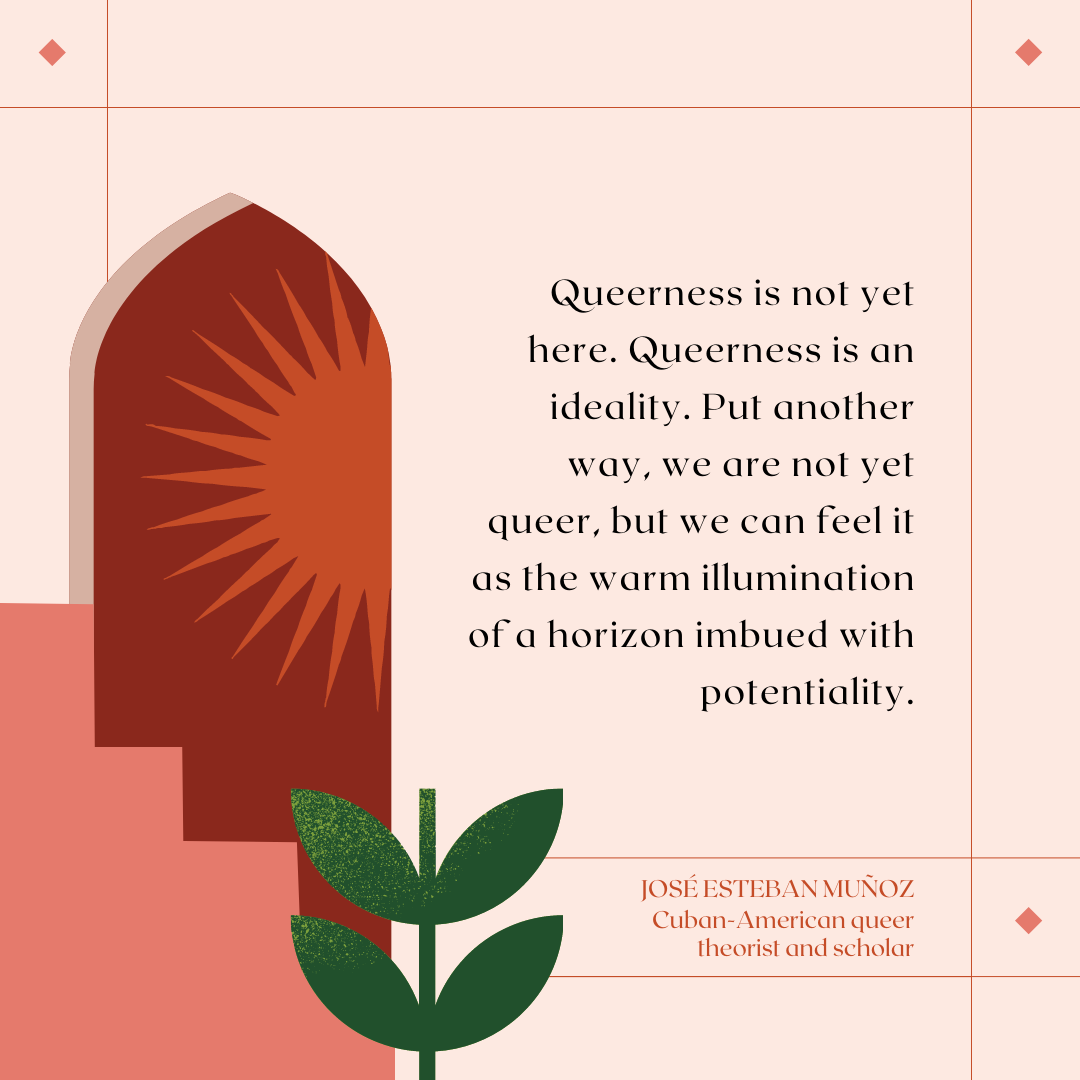
Understand what ‘queerness’ means for you.
Queerness is expansive, and can mean many things for different people. Let’s explore some ways that ‘queer’ has been defined, and start to shape your own definition of what it means.
LEARNA few definitions of ‘queer’.
You can use the word queer if you identify anywhere within the LGBTQ+ umbrella. Maybe you are “queer” because you don’t feel like your identity fits any one label. Maybe you are “queer” as a form of resistance to traditional norms around gender and sexuality. Maybe you’re not sure you’re queer or identify as anything within LGBTQ+ at all!
The word “queer” used to be a slur against LGBTQ+ people. In the 90s, queer activists reclaimed the word to mean a broad coalition of people who identified within the LGBTQ+ spectrum as a way to fight for greater rights and recognition.
We’re using “queer” in this course as a way to invite you to explore your sexual and gender identity in your own way and on your own terms.
Here’s how a few queer theorists define “queer”:
ACTIVITYCreate your own definition of ‘queer’.
Background: There is no definitive way of explaining ‘queer’ – that’s part of the beauty of exploring and finding your own connection to the idea of queerness or being LGBTQ+. In this activity, you’ll have some time to think about what ‘queer’ means to you, and how understanding the expression of it can help you affirm your own LGBTQ+ identity.
RESOURCEQueerness through the years.
All people have a sexual orientation and a gender identity. In fact there is a multidimensional spectrum of sexual and gender identities that have always existed historically and today.
All are valid and absolutely OK! Check out this timeline, specific for the United States, tracking some of the history of our community.




